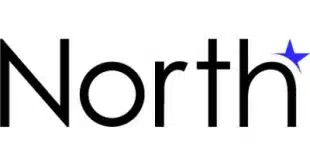![]()
Written by John Ruthven, IR CEO and Managing Director
The digital payments industry is undergoing a massive transformation fueled by accelerated technological advancements and growing customer demand.
The market is expected to be worth US$19.89 trillion by 2026, representing a compound annual growth rate (CAGR) of 24.4%, according to the Digital Journal.
So, what can we expect from the payments market in 2023? Here are the top four trends that will shape the payments industry this year.
Trend 1: Next-generation real-time payments schemes will roll out
According to Fintech Futures, the real-time payment market growth is expected to reach an impressive US$86.89 billion by 2028, representing an estimated CAGR of 32% from 2022 to 2028.
In 2023 we can expect to see:
- New payment rails enable faster, more efficient real-time payments for business-to-business (B2B) transactions, which will continue to have a transformative effect on businesses.
- The global implementation of the ISO 20022 messaging standard will have a positive effect on real-time cross-border payments and enhance security and compliance.
- The increasing automation of treasury functions such as risk management, reporting, and forecasting, provides CFOs access to richer, more up-to-date data thanks to real-time processes. Treasury management teams will lean into monitoring solutions like IR Transact to manage high value and real-time payment transactions.
- New instant payment schemes, such as the U.S. FedNow payment service launching in 2023, provide customers with more next-generation, innovative, instant payment offerings.
Automation of banking functions will provide access to richer, more current data, allowing customers to have more innovative and instant payment offerings. Ultimately, we expect to see banks take strategic steps towards infrastructure changes to ensure enough flexibility to cope with real-time payment types. This will be beneficial to customers as it allows for transactions to be processed quickly, securely and efficiently. But if banks get it wrong, and deliver a bad experience, they could lose valuable customers and revenue. Hence monitoring these transactions is crucial.
Trend 2: Embedded Lending, and Buy Now, Pay Later (BNPL) will continue to grow
Companies are embracing embedded lending as one of the newest fintech strategies for business growth. In the U.S., the embedded lending industry is predicted to grow at a CAGR of 27.5% in the coming years to top nearly US $200 million by 2029, according to Research and Markets.
According to Statista, the global BNPL market is expected to top US$576 billion by 2023, a huge growth driven by the increasing popularity of online shopping and the demand for convenience.
With increasing numbers of consumers using BNPL platforms, any uncertain economic conditions prompt growing concerns about consumers falling into increasing debt. The BNPL sector is already subject to more regulatory oversight, and this is expected to increase in the coming years.
The impact of increased regulatory oversight will likely require BNPL platforms to provide more transparent and responsible lending practices, such as limiting the amount of credit available and monitoring customers’ spending habits.
Trend 3: ‘Pay-by-bank’ at checkout will be encouraged by merchants
A growing number of retailers are encouraging shoppers to ‘pay-by-bank’ in real-time, and experts predict this will become a bigger option in 2023.
For banks, this translates to a revenue hit, as merchants can avoid the ‘swipe fees’ attached to card use. Pay-by-bank is also referred to as account-to-account payment. The technology allows merchants to take payments directly from the bank accounts of customers without a debit card.
As with any new technology, it’s important to ensure it works well and is secure to gain traction. Merchants should look to provide clear instructions and guides when introducing the option to customers. With the right implementation, pay-by-bank could be the way of the future for retailers and customers to save money and make payments more efficiently.
Trend 4: Continued growth in electronic transaction volumes
A study by Juniper Research reveals mobile contactless transaction volumes will significantly exceed contactless card volumes by 2023. Transaction volumes for mobile payments will grow from 26 billion in 2021 to 49 billion in 2023, representing a growth of 92%.
While electronic transaction volume will increase across all payment methods, Point of Sale (POS) debit and credit card volumes will continue to grow organically.
Digital brick-and-mortar payment volumes will continue to encroach on card-present payments, but minimally.
How IR can help
Keeping on top of emerging trends, technologies, regulatory changes and the introduction of new international payments standards is challenging. IR Transact solves this problem by providing users with a purpose-built tool that has been designed for today’s complex payments environment. It offers both real-time monitoring and analytics solutions that cater for a wide range of differing payment types including cards, high value and real-time payments.
Discover more about what IR Transact can do for your business. Book a Demo today






